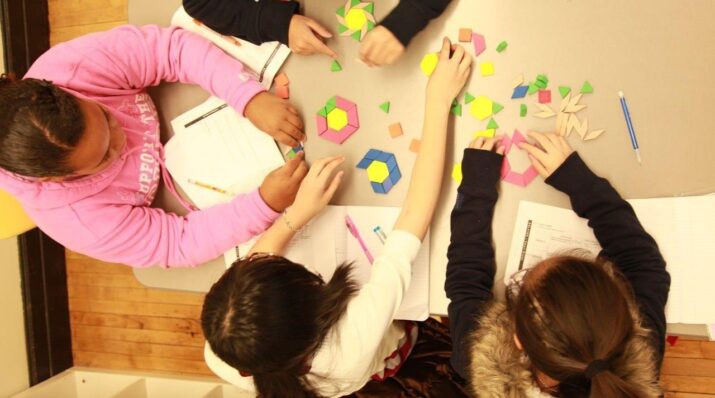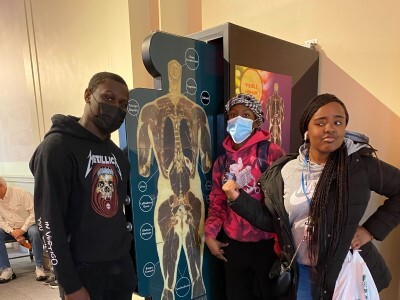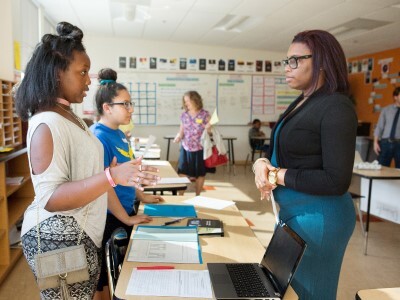Reimagining Assessment
Teacher as Director: Four Questions to Promote Small Group Collaboration
Topics

Educators are rethinking the purposes, forms, and nature of assessment. Beyond testing mastery of traditional content knowledge—an essential task, but not nearly sufficient—educators are designing assessment for learning as an integral part of the learning process.
You are likely to see students working in small groups in any classroom. Why do educators see small group collaboration as a model to facilitate learning?
Poke your head into any school around the country and you are likely to see students working in small groups. Why do educators see small group collaboration as a model to facilitate learning?
Small groups help students deepen knowledge and apply new skills. Research shows that group discussion of mathematics can increase student learning and motivation. When implemented with fidelity, small groups give students more ownership over their learning and helps them develop the collaborative skills essential to today’s workplace.
How can teachers be confident that everyone is fully engaged and participating? First, it means embracing a different instructional role, one that requires skillful facilitation, and patience. If the classroom is a stage, small group collaboration is most effective with students in the lead roles while teachers direct the action.
As with all educators who are shifting toward more student-led collaboration, teachers who use Teach to One: Math encounter common issues when it comes to effectively facilitating the small group modality. To dig in a little deeper, let’s look at four questions that we tackle as part of this process:
What Is My Role?
If you think of a group activity as a production, then the teacher is the director. Teachers set the stage, provide clear directions, and make sure everyone knows their part.
Behind the scenes of small group collaboration, teachers should regularly check in with each group and periodically ask questions to facilitate conversation.
But the real action begins when students take the lead. While a student’s instinct may be to ask the teacher for help, deeper learning can happen when students think through problems on their own or with their peers.

How Can We Start and End Strong?
As with any good story, the director must grab the audience’s attention from the start. In the classroom, the teacher is similarly charged with making sure students are engaged right in the opening minutes.
Teachers need a system to greet students, organize materials, take attendance, and let students know who they’re working with that day. In Teach to One, personalized schedules give teachers the benefit of predetermining these assignments automatically, but transitions still must occur in a timely and orderly fashion. In other settings, teachers should make sure that groups are assigned ahead of time and clearly communicated as soon as they enter the classroom to maximize learning time.
The final scenes are just as important. Ending routines, such as “I used to think...Now I think” or “Headlines”, ensure that every student has the opportunity to connect their group work to the particular skill or concept that they’re learning.
How Can I Help My Students Get into Character?
Being able to work effectively in teams is a social skill that’s increasingly in demand in today’s workforce. For students, participating in small group collaboration and discussion is a hands-on way to help them prepare for future success.
From the outset, teachers should explain to students how and why collaboration skills will help them in the future. Adults don’t always work well together, and students need to know that building relationships with people we may not initially choose to work with makes us better leaders and more tolerant individuals.
Next, students will need to know about and play individual roles that help promote group collaboration. Here are a few examples:
- The Questioner’s job is to ask clarifying questions, offer support for points of agreement, or list points of disagreement to challenge others to think differently.
- The Time-Tracker notices the time, reminds others to stay focused, and moves the group forward.
- The Materials Manager makes sure everyone has their materials, uses them properly, and puts them away when the activity is over.
- The Journalist’s job is to take notes throughout the discussion, highlighting the key points and important information that will be used to summarize the exercise at the end.
Some schools I work with allow students to work with each other to determine who plays what roles. Others assign the roles ahead of time. In either case, giving every student a group role provides them a clear purpose, which in turn increases their motivation to contribute.

How Can I Help My Students with Their Lines?
There is an art and science to conversation, and students often need practice to feel confident in the small-group setting.
To “rehearse,” I like to first get students talking about relevant and familiar topics that they can feel comfortable talking about—books, music, sports, television, or food. Next, we introduce the “Math Talk” concept.
Above are a few examples of the visual tools that some of our schools display to promote “Math Talk.” They have a lot of different names —question stems, accountable talk, math talk—but the idea is to provide a visual reminder of verbal lines for students to learn and practice. Like actors who go on to perform without a script, students should eventually begin to participate in small-group collaboration with confidence.
Small group collaboration is most effective as the “second act” of a learning experience. In Teach to One, students are first introduced to a new skill or concept in a more structured learning modality, like teacher-led Live Investigations or Virtual Instruction. Transitioning to small group collaboration gives students a chance to deepen their understanding and apply their knowledge in different ways that build habits for lifelong success.




